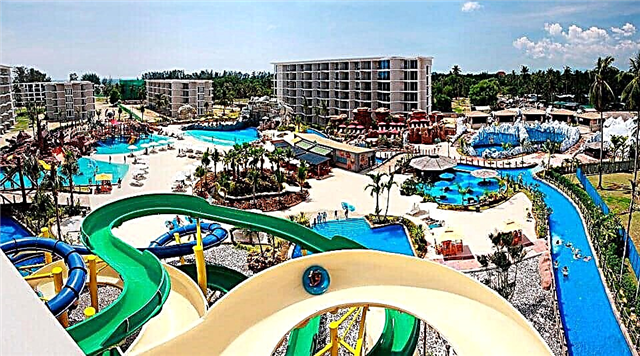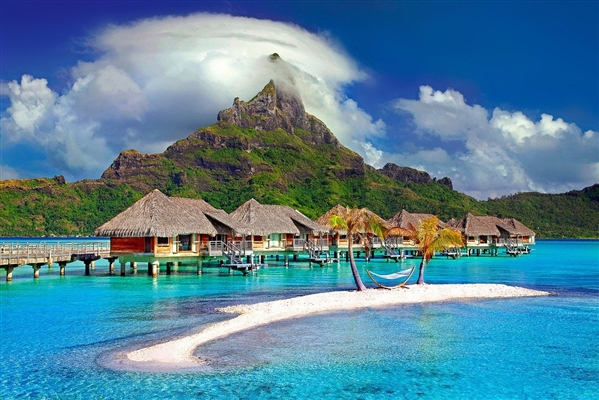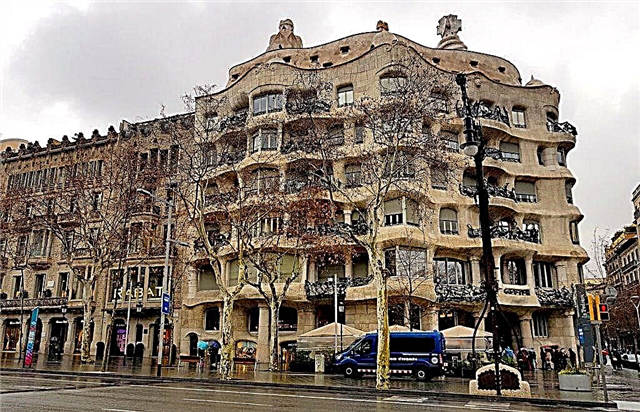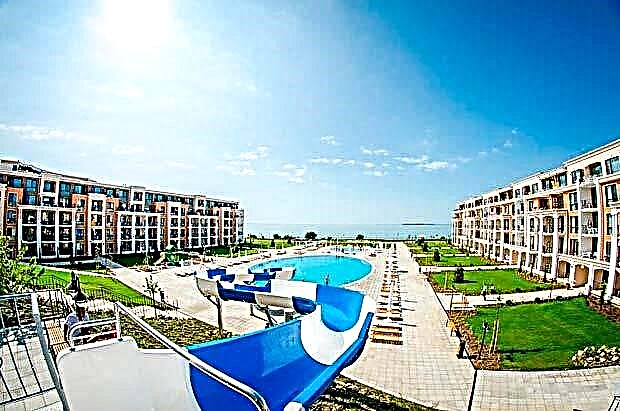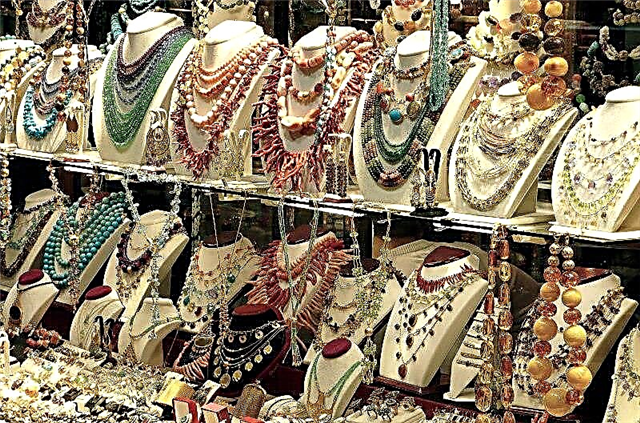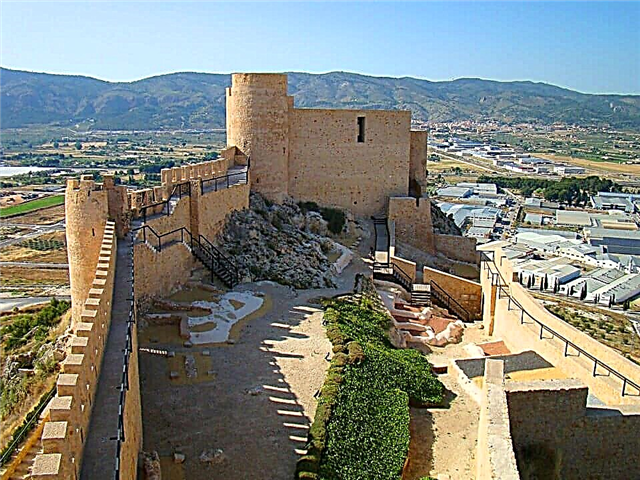An ancient city of Carthaginian origin, located on the Costa Blanca, today the most popular Spanish resort. Luxuriously decorated embankments, beaches with excellent infrastructure, Moorish sights have made Alicante a place of tourist pilgrimage. The symbols of the city - the medieval castle of Santa Barbara, the Santa Cruz quarter, the Church of Santa Maria, the Esplanade boulevard are known all over the world. The glorious history of the beautiful resort and seaport is reflected in the wonderful museums of Alicante.
Archaeological Museum MARQ

The history of an important institution for the city, demonstrating the history of its development over the millennia, began in 1932. For 30 years it has been actively enriching its funds, becoming a solid historical and archaeological center of world importance. By the opening of the new building of the MARQ Museum in 2002, 80 thousand unique exhibits were kept in its funds. The organizers tried to create a super-modern cultural and educational institution with interactive technologies.
Thanks to this, the visit is interesting not only for specialists and scientists, but also for ordinary citizens. The opportunity to see prehistoric objects against the backdrop of a recreated authentic setting attracts a lot of visitors here. The 5 thematic rooms house exhibits illustrating the different periods of the development of Alicante. Exhibits in the 1st hall illustrate the Bronze Age: primitive tools, various tools, ornaments.

In the 2nd hall, the culture of the Iberian era is presented: amphorae, statues of gods, fragments of the necropolises of Moral and Albuferet. The 3rd room demonstrates the Roman period in the history of Spain: household items, weapons, jewelry. Exhibits in the 4th hall introduce you to the Middle Ages, illustrating 2 world religions - Islam and Christianity. The 5th hall reflects the history of our time, exhibiting various inventions, furniture, works of art.
MASA Museum of Contemporary Art

It is ironic that works of modern art are on display in one of the old buildings of the city - a former granary. But when you see it today, the paradox disappears: talented architects managed to make a real Temple of avant-garde art of the 20-21 century from an outbuilding. The facade is crowned with the name of the famous native of Alicante - the artist Eusebio Sempere. Both the classic appearance of the building, and the modernism of the interior interiors, and unusual exhibits amaze the imagination of visitors.
The halls are literally flooded with light, the abundance of free space creates the impression of space. In the 1st hall, a huge metal capsule - UFO, with a fantastic inner content - is harmoniously "inscribed" into it. The main part of the collection consists of abstract works by Sempere, who donated 575 of his creations to the institution (1st floor). His graphics, woven from thousands of openwork lines, cannot be copied. Intricate designs of chrome-plated rods fascinate with mystery.

Attention is drawn to fantastic metal structures sparkling under the sun, abstract paintings. All the color of the modernist art of the world is presented on the other floors of the building. Paintings by Dali, Picasso, Chagall, Miro, Kandinsky, Gonzalez and others are displayed in various rooms. (177 copies) There is Picasso's iconic canvas "Alicante, a view of the city" in 1895 here. with a modern city.
We recommend unusual excursions:
- The magic of evening Alicante - fall in love with the city and immerse yourself in its bustling life in one evening (€ 26 per person)
- Sightseeing tour - the historical, architectural and gastronomic diversity of the city on a walk through interesting corners (€ 95 for 1-2 people or € 35 per person if there are more of you)
- Alicante for its friends - a friendly walk through the sunny hospitable city (€ 85 for 1-2 people or € 38 per person, if there are more of you)
- Guadalest village, waterfalls or dinosaur park and more - nature, crafts and entertainment of the picturesque Costa Blanca by car
- A trip to Valencia - a one-day auto-trip to one of the most vibrant, modern and romantic cities in Spain (€ 330 for 1-4 people or € 77 per person, if there are more of you)
Gravina Museum of Fine Arts

Located in the historic building of the Gravina Palace. It was organized and opened in 2001. Today, this institution, which stores the priceless cultural heritage of Alicante in its collections and storehouses, has won worldwide recognition. Even a very sophisticated esthete will find here a lot of new things. All permanent exhibitions feature works by native artists and sculptors. The largest exhibition is dedicated to the work of Emilio Varela Isabel.
A huge collection of paintings has been collected for many years, starting in 1838 and covering the period from the 16th century to the present. Among the masterpieces of the 16th century, the famous painting by Auson "The Calvary of Christ" from the Capuchin monastery is on display. An impressive painting by Bushel "Sunset in Florence", which he presented as a gift to the city. The gem of the 18th century collection is the portrait of Ferdinand VII by Vincent Lopez. There are paintings at exhibitions of his contemporaries: Ordonez, Aparicio, Peyret, Rhodes.
Alicante painting of the 19th century is represented by landscapes, portraits, social canvases by Casanova, Agrasota, Cabrera and others. The central exhibit of this collection is A. Hisbert's painting "The Owners of the Castile Estates". The fine arts of different periods of the 20th century are fully reflected. Among the paintings there are genuine masterpieces, the authors of which (Santa Gonales, Lozano, Perezgil) became the winners of international competitions. An extensive collection of works by avant-garde artists: Tapies, Rivera, Saura, Serano. There are a lot of beautiful engravings, miniatures of lithographs of the 16-19th centuries, many works of contemporary artists, including world celebrities P. Stang and P. Laporte.
Water museum

In the very heart of the Old City, on the picturesque slope of Mount Benakantil, there is an unusual museum. It consists of 3 parts, one of which - "The Wells of Garrigos" - is located in the open air. They are reservoirs built in rocks. Rainwater flowing down the aqueducts was stored in them. The first wells were made in the 16th century. The rest, designed by the engineer Garrigos, appeared in the 19th century.
They were equipped with a filtration system for drinking water. The wells served the city until the appearance of the central water supply system (1939). In 1968 the wells of Garrigos became the museum of the same name. Here are located archaeological artifacts discovered during excavations of the city of Lucentum. The wells illuminated with colored lights make a strong impression.
In 2009, a building was built right next to them, and the institution was named the Museum of Water. Its expositions introduce the history of the emergence and development of water supply in Alicante from antiquity to the present day (part 2). The third part of the institution, the most interesting for children and adolescents, is interactive. After the inspection, many stroll through the neighboring De La Hereta Park, from where incredible views of the city open up.
Vogueras Museum

The small building houses very interesting exhibits - various figures made of papier-mâché for the annual carnival (June 18-24). Traditionally, since 1928, about 100 expressive figures-characters of fairy tales, oral folklore, animals, etc. have been exhibited in the city. All of them, as a rule, are very expressive, picturesque and reach up to 30 m in height.
The festival dedicated to the beginning of summer is a favorite holiday and a significant event in the life of the townspeople. In the process of celebration, the figures are burned on the beach, and the best specimens (smaller copies) are placed in a small building.The entrance is free. For a few minutes of inspecting the originally executed figures, all visitors receive a hefty portion of delight.
Often these are not just individual figures, but compositions filled with meaning on various topics. Mythological monsters, married couples, newlyweds, dwarfs and giants are often depicted in a grotesque way. The collection, housed in 5 halls, reflects all stages of preparation and holding of the main festival over the years. Costumes, drawings, audio and video recordings, models clearly illustrate the history of the holiday.
Belém Museum

All skillfully executed attributes of the most important holiday of Catholics - Christmas are presented in the Belem Museum. It was opened in 1997 at the initiative of the members of the Association of Craftsmen for the Making of Christmas Arrangements. Exhibits-nativity scenes (13-21 c) have been collected for decades around the world. Here are the works of famous artists from different eras, who create scenes based on Christmas subjects. Each composition reflects the attitude of different authors to the birth of Christ, to the characters involved in this phenomenon.

Here are the true masterpieces of masters from different cities of Spain and other countries. The works of Jose Lebria (Madrid), Castells Martin (Barcelona), Pazis (Erez) and other artists from Valencia, Murcia, Poland, Germany, Japan, Portugal are magnificent. You can endlessly admire the amazing figures of the Virgin Mary, the Magi, baby Jesus and other characters. The skill of Careres Hurtado, who created the largest puppet theater on the theme of Christmas, is admired. Entrance b / p.
Bullfighting museum

The leader in attendance among cultural institutions. Located next to the "Ring of Bullfighting" arena. On an area of 400 sq. m, there are exhibits demonstrating the rich history of the art of bullfighting. Pictures of bullfighters' duels with angry animals, captured in photographs, are resurrected before our eyes. Permanent exhibitions feature costumes of Alicantian bullfighters of different years, their portraits, awards.
The first exhibition illustrates the "Golden Age of Bullfighting". Here you can visually meet the first bullfighters of the city: V. Blau, V. Fernandese, F. Antoni, L. Esplet. The second exhibition is dedicated to the famous 20th century bullfighters who have become legends in Alicante. One of them is Julio Martinez, awarded the scientific degree of doctor (1904). Photo documents, awards clearly confirm the extraordinary skill of Aneglu Karatal, Andreas Kolom and others.
The third exhibition acquaints visitors with the history of breeding and selection of various breeds of fighting bulls. The next exposition is a kind of art gallery, where paintings, posters, posters dedicated to bullfighting are displayed. The authors of these works are famous Spanish artists. In separate rooms, films and programs about bullfights are shown, meetings and conferences with bullfighters are held. There is a library with over 700 books on bullfighting. The whole atmosphere is imbued with the spirit of respect for the participants in the battles.
Volvo Ocean Race Museum

Another venue that reflects the city's respect for athletes is the Volvo Ocean Race. In the historic building of the Marine Station, there are expositions dedicated to the eponymous round-the-world regatta. Sailing yacht races have been held every year since 1973. The entire period of the race is clearly presented at exhibitions. The exhibits are regularly updated, and the collection is becoming more extensive.
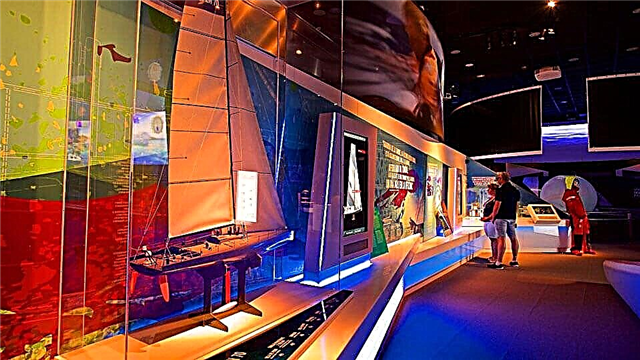
Here visitors can see unique footage of a 9-month journey by nautical miles. They reflect all the difficulties of overcoming huge distances among the waves, the courage of the participants in a high-speed cruise. Among the showrooms there is a control room, where 3D simulators recreate the picture of the regatta in real mode. Everyone not only sees the side of the yacht, but also feels like yachtsmen. Leaving the building, everyone is imbued with a sense of respect for courageous athletes.
Turron Museum in Gijon

For many, the mysterious word "turron" will become familiar and understandable after visiting an amazing establishment with a confectionery theme. The Turron Museum is located in Gijon (30 km from Alicante). Dedicated to a Spanish Christmas dessert made in the province of Alicante for the first time. Today, turron occupies an honorable place in the top ten of the most famous dishes in Spain. It is no coincidence that the museum is located on the territory of a confectionery factory.
Initially, turron was made from whipped proteins, toasted almonds and honey. Over time, other variations of the popular dessert have emerged. Fillers can be fruits, citrus fruits, coconuts, various nuts. On 3 floors of the building everything that is connected with the preparation of sweets is presented: raw materials and equipment for cooking. It displays primitive stone crushers, more advanced millstones and modern electrical appliances used in the culinary process.
The original tools for cutting the turron are surprising. The showcase displays packaging of all sorts of dessert. A film showing the manufacturing technology of the product is shown for visitors. At the end of the inspection, everyone receives a piece of fresh turron. You can buy it at your local store.
Fortress of San Fernando

The symbol of the city's defenses - the majestic fortress of San Fernando rises next to the central part of Alicante. The fortress castle was erected on a hill for 3 years as a defensive object from the attack of the Napoleonic army. The construction was supervised by the military engineer Pablo Sastre, who later led the army of Catalonia. The structure consists of 2 parts, interconnected by walls-passages. The northern bastion is a polygon, the southern one looks like a truncated cone.

In addition to the main structures, 5 defenses were built on the slopes of the hill, and the foot of the hill was surrounded by a moat. A bulletproof bunker was built inside the fortress. It is not afraid of any shelling, supplies of food and water were able to ensure a long stay in it. And today there are large tanks for storing water, there are supplies of food, weapons, gunpowder. The soldiers' barracks have also been preserved. Near San Fernando, a mini-park is set up - a favorite resting place for the townspeople. It has playgrounds, a golf course and a football field.




